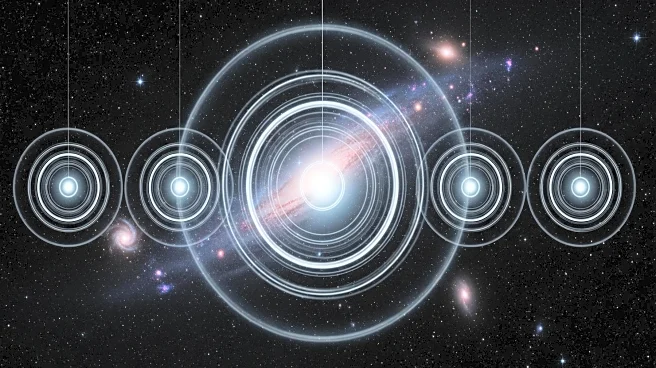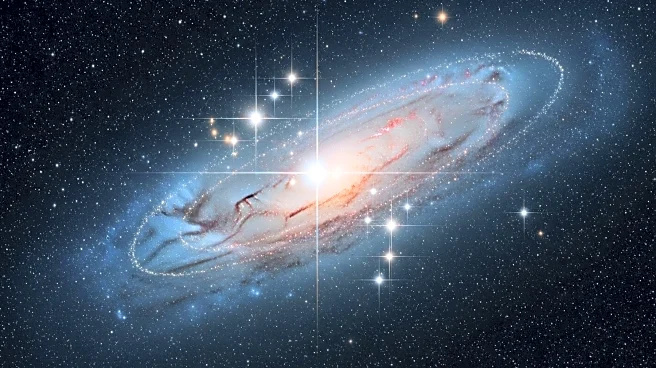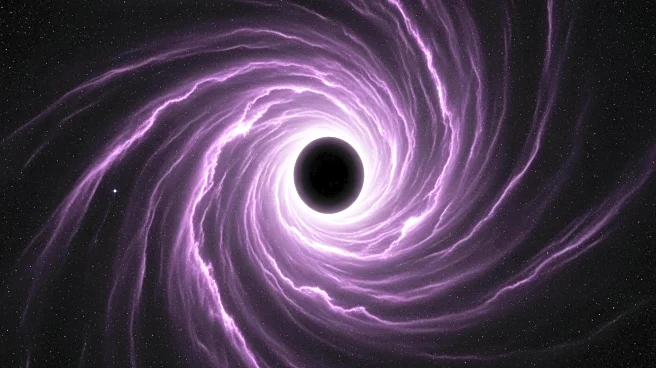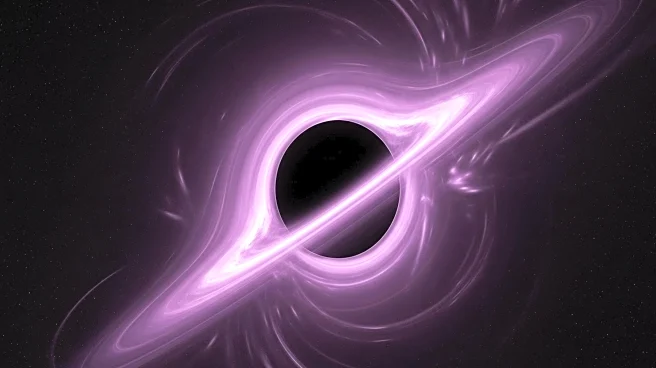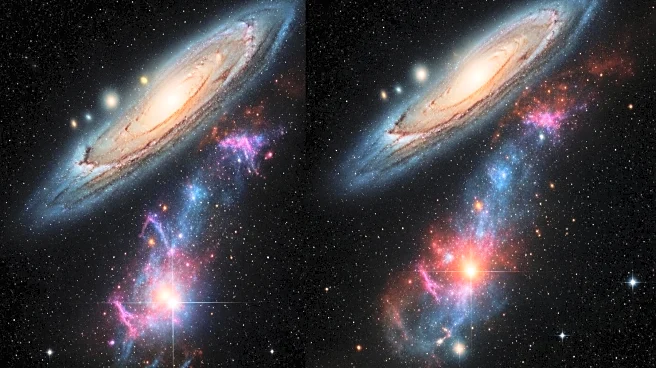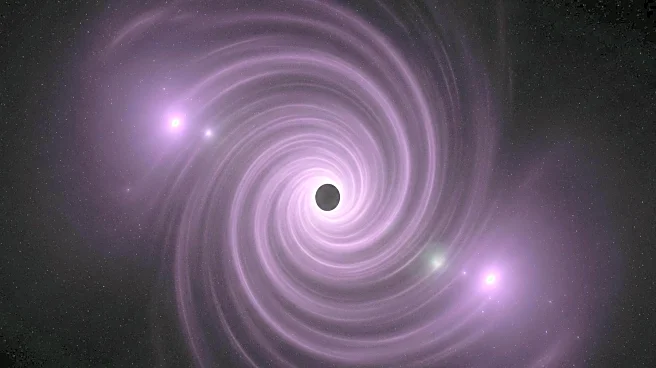What is the story about?
What's Happening?
Astronomers have been investigating a peculiar phenomenon known as Odd Radio Circles (ORCs), which are large, bright circular structures visible in radio wavelengths but not in optical, infrared, or X-ray wavelengths. A recent study led by scientists at Ruhr University Bochum in Germany focused on ORC J0356-4216, using the ASKAP and MeerKAT radio telescopes to analyze its radio waves. The ORC is composed of two symmetrical rings with a diameter of approximately 2.18 million light-years, and it exhibits a polarization of 20 to 30 percent with a tangentially oriented magnetic field. The origin of these structures remains unexplained, but researchers suggest they may be shock waves from past galaxy activity, such as starburst outflows, galaxy collisions, or increased activity from a supermassive black hole.
Why It's Important?
The study of ORCs is significant as it could provide insights into the dynamics and history of galaxies. Understanding these structures may reveal new information about galaxy formation and the behavior of supermassive black holes. The research could also contribute to the broader field of astrophysics by uncovering previously unknown phenomena. As ORCs are centered on galaxies, they might help scientists understand the processes that lead to their formation and evolution, potentially impacting theories about the universe's structure and the role of black holes in galaxy development.
What's Next?
Further research is needed to confirm the origins of ORCs and their implications for galaxy dynamics. Scientists may continue to use advanced radio telescopes to study these structures and explore other potential explanations for their formation. The findings could lead to new models of galaxy behavior and contribute to the understanding of cosmic phenomena. As the study is yet to be peer-reviewed, additional scrutiny and validation of the results are expected, which may refine or expand current theories.
Beyond the Headlines
The discovery of ORCs challenges existing astrophysical models and highlights the importance of open-mindedness in scientific research. It underscores the need for continued exploration and the willingness to consider unconventional explanations for cosmic phenomena. The study of ORCs may also inspire new technological advancements in radio astronomy, enabling more detailed observations of the universe.
AI Generated Content
Do you find this article useful?
